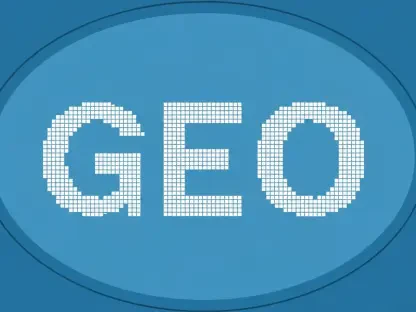As we reflect on the developments in Out of Home (OOH) advertising in 2024 and look ahead to 2025, several key trends and technological advancements are shaping the sector. Talon’s extensive research and insights provide a critical perspective on the growing strategic importance of OOH for brands. This article delves into the significant trends observed and anticipated in the OOH landscape, highlighting its evolution and integration with other media strategies.
The Rise of Retail Media
Retail media has emerged as a powerful force in the advertising landscape, transforming how brands engage with consumers. By leveraging data and insights from retail transactions, companies can deliver highly targeted campaigns that drive conversion and enhance customer loyalty. This shift is evident in the significant investments that major retailers are making in their media networks, aiming to offer advertisers new ways to reach potential buyers at critical touchpoints. As the retail media sector continues to grow, it promises to reshape traditional advertising models and provide more precise marketing strategies.
Integration of Retail Media and OOH
Retail Media has experienced substantial growth, with global advertising spend increasing notably. According to Group M, it accounted for 17.5% of global ad spend and is projected to surpass TV by 2028. This remarkable growth underscores the increasingly blurred lines between retail media and retail OOH. With more supermarkets developing their internal media teams, advertisers are swiftly aligning themselves with this transformation, drawn by the significant potential that retail OOH holds in enhancing shopper marketing strategies. Talon’s consumer behavior research indicates that a significant 89% of consumers have a preference for brick-and-mortar locations where retail OOH is prominently featured. This growing interest showcases how crucial OOH is in the larger shopper marketing matrix.
The combination of retail media’s robust targeting capabilities with retail OOH’s unmatched precision enables brands to efficaciously connect with consumers throughout their shopping journey. This strategic integration is not just a trend but a vital component of contemporary marketing practices. By merging retail media’s data-driven targeting with OOH’s impactful visual presence, advertisers can craft campaigns that deliver precision and personalization. The precise targeting ensures that the messaging resonates well with potential buyers, making it effective across different phases of the marketing funnel. This alignment augments the customer experience, resulting in more engaging and personalized interactions during the shopping journey.
Targeting and Precision in Retail OOH
Retail media’s targeting abilities in conjunction with retail OOH’s precision can help brands reach consumers effectively throughout their shopping journey. By understanding consumer behavior and preferences, advertisers can develop tailored campaigns that speak directly to their target audience. This targeted approach drives measurable results across both the upper and lower parts of the marketing funnel, enhancing brand visibility and engagement from initial awareness to final purchase decisions.
Advertisers are leveraging these capabilities to create more personalized and impactful campaigns, thereby significantly enhancing the overall shopping experience for consumers. The strategic use of data has empowered advertisers to develop campaigns that are not only visually appealing but also contextually relevant. By delivering messages that resonate with consumers at the right time and place, brands can build stronger connections and foster loyalty. This data-driven approach ensures that every interaction is meaningful, driving both immediate sales and long-term brand affinity.
Convergence of OOH and Experiential Advertising
Creativity and Bold Solutions
Creativity in OOH advertising is expected to flourish in 2025 as brands embrace bold and imaginative solutions that leverage public spaces as canvases, enhancing brand credibility. A study conducted by Talon UK found that 40% of people trust brands more when they use OOH advertising, emphasizing its strength compared to other formats. This newfound trust is attributed to the authenticity and impact that OOH advertising can provide, making it a powerful tool for building brand credibility and customer loyalty.
Non-traditional locations are becoming essential for advertisers aiming to connect with audiences through unique and memorable experiences. By using public spaces creatively, brands can engage consumers in ways that are immersive and unexpected, thereby creating stronger emotional connections. The forthcoming year is likely to witness campaigns utilizing impactful design and innovative placements to forge deeper connections with audiences, making out-of-home (OOH) advertising a dynamic and versatile medium.
Impactful Design and Innovative Placements
The forthcoming year will likely witness campaigns using impactful design and innovative placements to forge deeper connections with audiences. These creative approaches not only capture attention but also create memorable brand experiences. Advertisers are increasingly exploring new ways to engage with consumers, making out-of-home (OOH) advertising a dynamic and versatile medium. By transforming public spaces into captivating brand experiences, advertisers can leave a lasting impression on their target audience, driving brand loyalty and recognition.
Innovation in design and placement is not just about aesthetics; it is about creating memorable brand experiences that resonate with consumers long after they encounter the advertisement. Advertisers are moving beyond traditional billboards and posters, exploring interactive installations, augmented reality, and immersive experiences that captivate and engage audiences. These innovative approaches allow brands to tell their stories in more compelling ways, making out-of-home (OOH) advertising a powerful tool for building brand identity and driving consumer engagement.
Continuous Measurement of Attention Metrics
Continuous measurement of attention metrics allows for a real-time assessment of how users are engaging with content. This enables organizations to make data-driven decisions to optimize their strategies, improve user experience, and enhance overall outcomes.
Importance of Attention Metrics
Attention metrics are becoming increasingly vital for measuring the effectiveness of OOH advertising campaigns. Kantar’s Media Reactions study highlights a 90% correlation between channels that capture attention and those preferred by consumers, placing OOH and DOOH among the top three attention-grabbing channels. This strong correlation underscores the importance of attention metrics in understanding and optimizing OOH campaigns. By measuring how well their advertisements capture and retain audience attention, advertisers can gain valuable insights into campaign performance and make informed decisions to enhance their strategies.
Studies on “attentive reach” are helping advertisers understand audience engagement better. For instance, Talon’s research shows that approximately 70% of respondents notice DOOH ads, with over 40% likely to engage. These metrics not only validate the effectiveness of OOH advertising but also provide actionable data for optimizing campaigns. By focusing on attentive reach, advertisers can ensure that their messages are seen and remembered by the target audience, driving both immediate responses and long-term brand recall.
Advanced Measurement Systems
Advanced measurement systems are set to play a crucial role in enabling advertisers to measure the effectiveness and impact of their OOH campaigns accurately. The anticipated launch of a new comprehensive OOH measurement system in 2025 will further enhance the industry’s ability to demonstrate accountability and effectiveness. These advancements in measurement technology will provide advertisers with more accurate and detailed data, helping them to optimize their campaigns for better outcomes. Talon’s commitment to leveraging these advanced systems reflects the industry’s dedication to transparency and accountability.
These advancements will provide advertisers with precise data on ad performance and audience engagement, enabling them to optimize their campaigns for maximum impact. This data-driven approach ensures that every advertising investment delivers measurable returns, making OOH an indispensable part of the marketing mix. Advertisers can now track how well their ads capture attention, engage audiences, and drive desired actions, allowing them to refine their strategies and achieve better results. This evolution in measurement systems marks a significant step forward in the OOH industry, setting new standards for accountability and effectiveness.
Programmatic OOH Driven by Big Screens and First-Party Data
Evolution of Programmatic Capabilities
Programmatic capabilities have significantly evolved over the years, transforming the way businesses approach marketing, advertising, and data management. Initially, programmatic advertising began with basic functionalities, but it has since expanded to include advanced targeting, real-time bidding, and sophisticated analytics. These advancements allow companies to reach their audiences more efficiently and effectively, maximizing return on investment and enhancing overall campaign performance. As technology continues to advance, programmatic capabilities are expected to further innovate, driving more personalized and dynamic advertising strategies.
Programmatic capabilities in OOH are transforming the way advertisers engage with their audiences. Large-format digital screens are increasingly becoming programmatically enabled, facilitating the seamless integration of online and offline strategies. This trend allows for more dynamic and contextual real-time messaging, making OOH advertising more relevant and impactful. The evolution of programmatic OOH signifies a shift toward more data-driven and automated advertising, enabling brands to deliver personalized messages at scale.
The seamless integration of programmatic capabilities allows advertisers to adapt their messages in real-time based on audience data, events, and location-specific factors. This level of flexibility and precision enhances the overall effectiveness of OOH campaigns, ensuring that the right message reaches the right audience at the right time. By leveraging programmatic technology, advertisers can create more engaging and targeted campaigns, driving higher levels of audience engagement and campaign success.
Leveraging First-Party Data
First-party data, collected directly from customers through interactions with your brand, offers unparalleled insights into customer preferences and behaviors. When leveraged effectively, this data can help tailor marketing strategies, improve customer experiences, and drive business growth. It is crucial to ensure that data collection practices are transparent and comply with privacy regulations to maintain customer trust.
Talon’s Optimise programmatic solution exemplifies the blend of creativity and technology, offering sophisticated targeting and precision by leveraging first-party data for maximum impact. This approach enables advertisers to create more relevant and timely messages tailored to their target audiences, enhancing the overall effectiveness of OOH campaigns. By utilizing first-party data, brands can achieve a deeper understanding of their customers, allowing them to deliver more personalized and impactful experiences.
This trend signifies a blend of creativity and technology, ensuring scalable and measurable OOH campaigns. Advertisers can now deliver more relevant and timely messages to their target audiences, enhancing the overall effectiveness of their campaigns. The use of first-party data allows for precise audience segmentation and targeting, enabling advertisers to create highly personalized campaigns that resonate with their audience. This data-driven approach ensures that OOH advertising remains effective in an increasingly digital and data-driven world.
OOH’s Role in Multichannel Strategies
Out-of-home (OOH) advertising plays a significant role in enhancing multichannel marketing strategies by reaching consumers in a physical space, thus complementing digital and traditional media efforts. This integration helps create a cohesive brand experience and drives consumer engagement across various touchpoints. By leveraging OOH advertising, brands can increase exposure, reinforce messages seen online, and drive traffic to both physical and digital stores, ultimately optimizing their overall marketing impact.
Unskippable Nature and Extensive Visibility
In an advertising world marked by ad blockers, privacy concerns, and fragmented audiences, OOH’s unskippable nature and extensive visibility make it a cornerstone of multichannel strategies. Studies by WARC and JCDecaux reveal that OOH significantly boosts the performance of other media, enhancing search, social, TV, radio, and press. This intrinsic ability of OOH to offer consistent visibility and engagement presents advertisers with a unique advantage, particularly in an era where digital ads are increasingly avoided through various ad-blocking technologies.
By being unmissable and omnipresent, OOH ads ensure that the brand message reaches a wide and diverse audience without intrusion. This visibility is particularly valuable in an environment where consumers have grown adept at ignoring or blocking digital advertisements. The unskippable nature of OOH ensures that the brand message is seen, increasing the chances of consumer engagement and recall. This consistent presence not only amplifies brand visibility but also reinforces campaign messaging across multiple touchpoints.
Synergy with Mobile and Other Media
OOH’s synergy with mobile delivers notable increases in memory encoding and emotional impact, making it an essential component of multichannel campaigns. Advertisers are expected to leverage OOH in 360 strategies to deliver unified and impactful messaging. The synergy between OOH and mobile is particularly powerful, as it allows advertisers to create cohesive and engaging brand experiences across multiple touchpoints. By integrating OOH with mobile and other media channels, brands can enhance their reach and impact, creating a more immersive and memorable experience for consumers.
This integration ensures that brands can reach their audiences across multiple touchpoints, creating a cohesive and engaging brand experience. By combining the strengths of various media channels, advertisers can create more effective and impactful campaigns that drive better results. The strategic use of out-of-home (OOH) in multichannel strategies not only enhances brand visibility but also reinforces campaign messaging, leading to higher levels of audience engagement and campaign success. This holistic approach ensures that brands can effectively navigate the complexities of the modern advertising landscape, reaching their target audiences in meaningful and memorable ways.
Standardization of Data-Driven Strategies
Standardizing data-driven strategies involves creating consistent and repeatable processes for collecting, analyzing, and using data to make informed decisions. This ensures that data is accurately interpreted and effectively used across various departments and projects within an organization.
Importance of Consumer Behavior Data
As consumer behavior continues to evolve, data-driven strategies have become crucial in ensuring the effectiveness of advertising campaigns. This trend is likely to persist, influenced by economic and social factors. Talon’s consumer behavior research, used in conjunction with their Talon Zone mapping system, ensures campaigns are tailored, relevant, and adaptive. By leveraging detailed consumer insights, advertisers can create more personalized and effective campaigns that resonate with their target audience. This data-driven approach ensures that every advertising dollar is spent efficiently, maximizing the impact and effectiveness of each campaign.
This approach underscores the importance of basing marketing strategies on solid data to connect with audiences effectively. Advertisers can create more personalized and impactful campaigns that not only capture attention but also drive desired actions. By understanding the nuances of consumer behavior, advertisers can develop campaigns that speak directly to the needs and preferences of their audience, leading to higher levels of engagement and conversion. This data-driven approach is essential in an increasingly competitive and fragmented advertising landscape.
Tailored and Effective Campaigns
The adoption of data-driven strategies ensures that OOH campaigns are tailored to the specific needs and preferences of the target audience. By leveraging consumer behavior data, advertisers can create more personalized and impactful campaigns that resonate with their audience. This data-driven approach enables advertisers to deliver more relevant and engaging messages, driving higher levels of audience engagement and campaign success.
Talon’s approach, using detailed consumer behavior research in conjunction with their Talon Zone mapping system, highlights the importance of basing marketing strategies on solid data. This combination ensures that campaigns are not only relevant but also adaptive, allowing advertisers to respond to changing consumer behaviors and market conditions effectively. By understanding their audience’s preferences and behaviors, advertisers can create campaigns that are more likely to capture attention and drive desired actions. This tailored approach maximizes the impact of advertising efforts, leading to better campaign outcomes.
Sustainability through Repurposing and Education
Embracing Eco-Friendly Practices
Sustainability has become a significant priority across all sectors, including out-of-home (OOH) advertising. The industry has made considerable strides by embracing recyclable materials and renewable energy sources in their campaigns. Initiatives such as powering down at off-peak times and using sustainable materials reflect the industry’s commitment to environmental responsibility. As we move into 2025, the focus on sustainability in OOH is expected to grow even further. Advertisers are increasingly repurposing campaigns to align with eco-friendly goals, reflecting a broader commitment to sustainable practices.
This shift not only benefits the environment but also resonates with consumers who are increasingly prioritizing sustainability in their purchasing decisions. By aligning their campaigns with eco-friendly practices, brands can enhance their reputation and build stronger connections with their audience. Consumers today are more aware and concerned about the environmental impact of their choices, and brands that demonstrate a commitment to sustainability are more likely to earn their trust and loyalty.
Commitment to Sustainability
The commitment to sustainability is evident in Talon’s dedication to eco-friendly advertising practices. As a member of AdNet Zero, Talon contributes to key working groups and initiatives aimed at reducing the environmental impact of advertising. This dedication is reflected in their approach to creating sustainable OOH campaigns that not only capture attention but also align with broader environmental goals. By focusing on reusable elements and sustainable practices, Talon and other industry leaders are setting new standards for eco-conscious advertising.
They predicted a growing trend of eco-conscious advertising as brands adopt reusable elements in their OOH campaigns. As advertisers continue to prioritize sustainability, the industry is likely to see more innovative and eco-friendly approaches to OOH advertising. This commitment to sustainability not only enhances the industry’s reputation but also ensures that it remains relevant and effective in a world that increasingly values environmental responsibility. By leading the way in sustainable advertising practices, Talon and other industry leaders are setting a benchmark for the future of OOH advertising.
Conclusion
As we review the progress in Out of Home (OOH) advertising throughout 2024 and anticipate what’s ahead in 2025, several significant trends and technological advancements are emerging to shape the industry. According to Talon’s comprehensive research and insights, the strategic importance of OOH for brands is growing. This article explores these crucial trends observed and anticipated in the OOH landscape, underlining its evolution and closer integration with other media strategies.
OOH advertising has been evolving rapidly, driven by technological innovations and changes in consumer behavior. Digital OOH (DOOH) continues to expand, offering brands more dynamic and engaging ways to connect with their audience through advanced targeting and real-time data. The rise of programmatic buying in OOH is another key trend, allowing for more efficient and targeted ad placements.
Additionally, there is a growing emphasis on the integration of Out-Of-Home (OOH) with mobile and online advertising, creating a more seamless and comprehensive marketing strategy. Brands are increasingly leveraging cross-channel campaigns to enhance reach and effectiveness, utilizing data analytics to measure performance and optimize their OOH efforts.
As we move into 2025, the out-of-home (OOH) advertising sector is expected to continue its transformation, with further advancements in technology and deeper integration with other media forms. This ongoing evolution reinforces the critical role of OOH in modern advertising strategies, ensuring its continued relevance and impact in the marketing mix.









